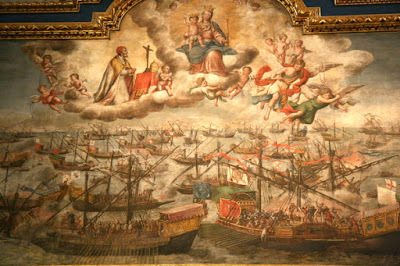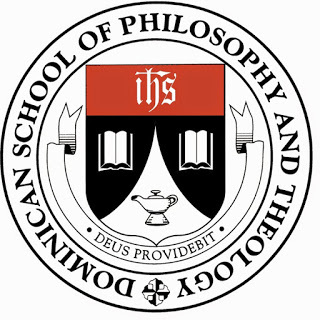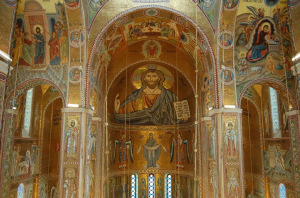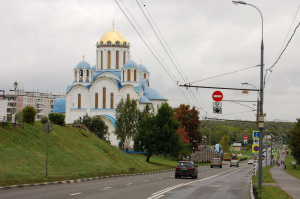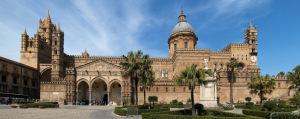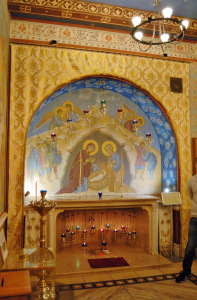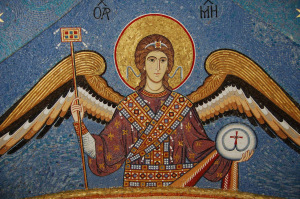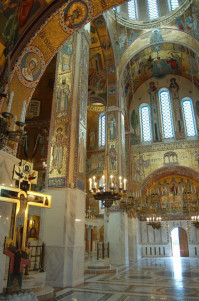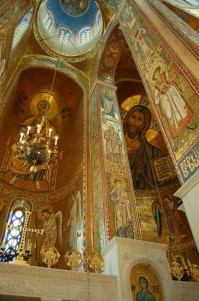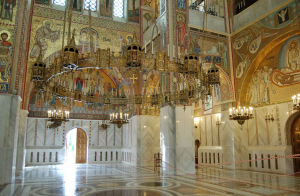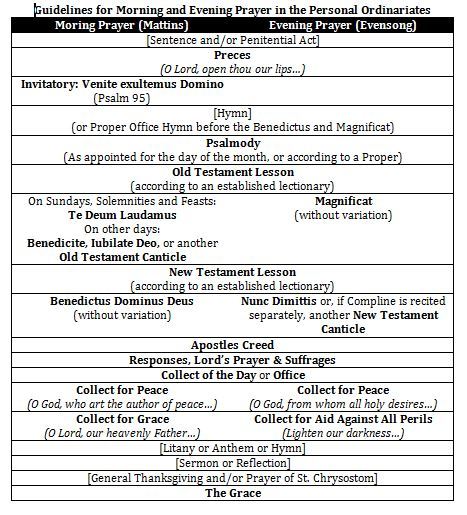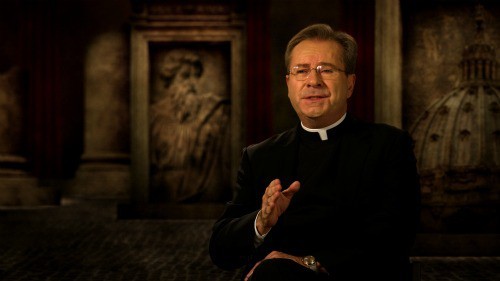David Clayton's Blog, page 14
March 10, 2016
Men’s Holy League in Manchester, NH this Friday
Some of you may remember that on November 25th I wrote a short piece publicizing the idea of establishing parish based men’s groups that are part of the Holy League.
The idea is that the men’s Holy League meets monthly and has been formed in response to a call from Cardinal Burke and is intended to create a network of parish-based men’s groups in a structured Holy Hour.
The Holy League was first formed as part of the call to holiness and fortitude that occurred when Europe was under threat from Islamic forces and prior to the battle of Lepanto in 1571. The aim is to reestablish this in every Catholic parish. The intention is that it will form men to be engaged in spiritual combat and to participate in the transformation of the culture. Just as it did in the 16th century.
I would love to hear of any groups that have started and how they are doing. I would be happy to publicize your Holy League meeting.
The one I mentioned in my original blog post, in Manchester, NH is still going strong and is due to meet at St Raphael’s Church, Manchester at 7pm this coming Friday. The format is Compline, Eucharistic Adoration, prayer, short spiritual reflections, the availability of the Sacrament of Confession, Benediction and fraternity. Following the Holy Hour there is a Social Hour (bring something to drink). The conversation in this crowd of men is always hard hitting, intelligent and fun.
March 9, 2016
More About the Sanctuary Academy, A New Type of Catholic School that Offers a Formation in Beauty
Dostoevsky wrote famously, “Beauty will save the world.” But can it save Catholic education? The answer is yes! in the opinion of Michael and Kelly Sullivan who are creating The Sanctuary Academy in Chicago. I was excited recently when they contacted met to ask for advice in incorporating the principles of education on those described in the Way of Beauty into the school they are founding for students aged 6-11 years. Michael and Kelly are inspired also by another book, published last year by Angelico Press and written by Dr Ryan Topping. It is called, the Case for a Catholic Education:
As Ryan has masterfully pointed out, we are in a crisis of Catholic education. Our educational form has aped the public school industrial model of education with only marginal better testing outcomes, and disastrous results when it comes to faith engagement. The Church is losing 70% of its young people to apostasy and the remaining 30% are only nominally Catholic according to a recent study. We are living with the fruits of what Bishop Baron has called “beige Catholicism” where atheists and agnostics know our faith better than we do.
One response to this problem is The Sanctuary Academy, and they need your help.
The Sanctuary Academy is a new model of Catholic education that is combining The Acton Academy in Austin, TX with the Catechesis of the Good Shepherd and The Way of Beauty (inspired by my book). The Acton Academy model has come out the Acton Institute and is a model that aims at promoting the values that will form the children so that they are able to contribute to society creatively. The Sanctuary Academy is working within the Acton model, but is adding an additional Catholic element that seeks to direct the students to the end of all Catholic education – supernatural transformation in Christ through a liturgically centered piety.
The Big Idea is that when children are free to pursue their own interests they will have accelerated learning and become lifelong learners in pursuit of the work God has called them to fulfill in His Kingdom. What children need alongside this ordered freedom is a culture of encounter, love and Beauty.
The Sanctuary Academy is seeking to form “world changers” to change the world through their encounter with the World Changer Himself.
How do I know about this new effort? I know the founders and am was honored to be asked to serve on the advisory board for The Sanctuary Academy.
What they need now though, is your help. They must quickly raise funds to pay for the remaining $9,000 of the $10,000 licensing fee for the Acton Academy materials. They are on their way and with your help will get there.
You can hear a bit more about the project here and donate to their crowdfunder, here
More on The Sanctuary Academy to come!
March 3, 2016
Way of Beauty Principles Incorporated into New Catholic Grade School – Please Support This New Venture
I am delighted to announce that The Sanctuary Academy in Chicago, which is a newly founded Catholic independent school that is devoted to a formation of young children so that they can contribute creatively to a culture of beauty. In this program education science, faith and art are united in the contemplation and creation of beauty.
They are founding it on the principles of the Acton Academy model which promotes the values of the Acton Institute - human flourishing in a society of faith and freedom. In order to give it a distinctive and authentically Catholic ethos they are going to incorporate the Catechesis of the Good Shepherd and the principles outlined in my book the Way of Beauty adapted for young children.
I am a friend of the Michael and Kelly Sullivan who are the founders, and if you follow the link here you will find a video in which they explain the concept and they are asking for support. This is an exciting new project and it deserves support they are asking for – I am honored to be on the Advisory Board for the Academy. As an incentive, if you give to the project they are offering a number of book, including a copy of the Way of Beauty!
For more information go here.
March 1, 2016
Poverty, Inc. – a video that offers real answers to global poverty
Now available on Amazon and iTunes
Here is a series of documentaries which were a real eye-opener for me. I have often wondered why some countries have economies that seemingly have explosive growth and others remain in a state of permanent stagnation. Sometimes the answer is obvious. I can see that a region which is in a state brutal civil war is unlikely to develop economically. But what of those countries that are peaceful, why do some remain poor – is it simply a case that we in the developed world need to dig deeper and give more? The answer, it seems is no. Poverty, Inc gives an alternative viewpoint.
If ever there was field in which people have been measured by their intentions rather than results, it seems, it is in the efforts to eradicate poverty in the developing world. The intentions of people who give development aid are often noble, but the effects have been mixed at best, and in some cases disastrous.
Some of the problem is corruption and the fact that there are unscrupulous people around who pocket the money so that much of it never gets to where it is intended for. But it runs much deeper than that. It seems that problems are intrinsic to the whole system of aid that the West has created and there are terrible unintended consequences for the very people whom we want to help. Even if all involved are honest and diligent, the nature of the projects that the money is actually spent on is such that when you examine the effectiveness, they actually keep people in poverty. Whether it is intended or not, the people who really benefit most are those who are involved in the multi-billion dollar development business. As a result, leaders in the developing world are growing increasingly vocal in calling for change.
Here is a video, now available on Amazon and iTunes, which examines this problems and comes up with answers. Drawing from over 200 interviews filmed in 20 countries, Poverty, Inc. unearths an uncomfortable side of charity we can no longer ignore.
From TOMs Shoes to international adoptions, from solar panels to U.S. agricultural subsidies, the film is challenging and certainly made me wonder if I am part of the problem too? The evidence seems to suggest that the most effective answers are rooted in the cultural backdrop of faith and family from which the entrepreneurial drive can flourish.
February 26, 2016
Register Now: Conference to Showcase World Premiere of Oratorio About St Rita
Full details are now available online for the conference about sanctity, beauty and catholic artistic expression taking place at St Rita’s Catholic Church in Dallas, Texas; May 19-21.
It has been organized to showcase the world premiere of a specially commissioned Oratorio about St Rita. The oratorio, A Rose in Winter - the Life of St Rita of Cascia has been composed by Frank LaRocca and librettist Matthew Lickona. The performance will be conducted by Dr Alfred Calabrese.
Scheduled speakers are the composer, librettist and conductor; as well as Dr Ron Rombs and Dr Kathryn Rombs of the University of Dallas, Fr Michael Digrigoria OSA, Fr Joshua Whitfield of St Rita’s Church and myself. Titles and abstracts of the talks are on the website.
For more information and register go to stritaconference.com.
My hope is that they might commission a piece of art work to go with it! Judging from the selection on Google images when you put her name into the search engine, there aren’t many high quality holy images of her around! I like this one, which I found on the internet, but with no mention of who the artist is.
February 23, 2016
DSPT to Offer a Catholic Orientation for Working Artists in Any Creative Discipline
The Way of Beauty Book Will Be a Text Book for the Course.
The Dominican School of Philosophy and Theology, which is part of the Graduate Theological Union at Berkeley University in California is offering an exciting new Certificate in Theological Studies which is intended for working artists. This is a Masters level, four-course (12-unit) Certificate which is recommended for those who already have a working knowledge of a specific art medium (visual arts, music, architecture etc.) and wish to augment their expertise with a specialized focus in the relationship of the fine arts to Catholic worship and culture.
The approach to this certificate program assumes the “cross-disciplinary approach” between philosophy and theology that uniquely characterizes all DSPT curricula. Furthermore, in this particular program there will be a focus on the integration of theory with praxis, particularly as it applies to Catholic worship and culture. An emphasis on the outcomes of this course is on the evangelization of the culture through a well discerned engagement with contemporary cultures so that the creativity of the artist is directed towards the engagement of contemporary man, without any compromise of the core principles of a traditional Christian culture.
The Certificate program of studies is organized by the Academic Dean of the DSPT, Fr Chris Renz (some readers may remember that I highlighted his excellent article on liturgy and culture published in Antiphon recently). Also involved will be Fr Michael Morris, art historian and professor of religion and the arts at DSPT, who is also well known as a writer on Christian art and culture. . He and Fr Renz are both leading lights in the research institute for religion and the arts called the Santa Fe Institute which has over 12,000 volumes in its library. This resource will be available to students on this certificate.
Anyone who has read any of my writings over the years will see why I am enthusiastic about this – these themes of inculturation, worship and fresh creativity are at the heart of my own ideas about the evangelization of the culture. I am thrilled, as you can imagine, when Fr Renz told me that he intends to use my book the Way of Beauty as one of the texts for the opening course of the Certificate program.
The first course of the four to be offered, in the coming Fall, is called the Foundational Principles of Catholic Liturgy and Worship. To complete the Certificate in Theological Studies program with a specialization in Sacred Arts, the student must complete the four courses indicated below, typically over two or more semesters.
1. Foundational Principles of Catholic Liturgy and Worship (next offered Fall 2016)
2. Liturgical Piety: Anthropological Foundations of Catholic Worship (next offered Spring 2017)
3. One Elective offering from any advisor-approved Religion and the Arts course. These are the courses particularly that will be practical elements, such as painting.
4. Christian Iconography (next offered Spring 2018)
The format for all courses is once per week for just under 3 hours. Courses will typically offered during the weekday (which means that you have to be within striking distance of Berkeley, California in order to take it).
The named outcomes are to:
• imbue students with an understanding of sacred art and its relationship to sacred liturgy;
• provide students with the philosophical and theological foundations for the anthropological as well as the transcendent aspects of art;
• provide basic principles for using the fine arts as a vehicle for “preaching the gospel” to the contemporary culture.
Application Process
Applicants must complete the DSPT Certificate of Theological Studies application (found at the DSPT website), including a statement of purpose, official transcript, and two letters of recommendation. Application is on a rolling admission process.
Tuition and Fees
Tuition rate for 2016-2017 academic year is $715 per semester unit (all courses are 3 units). For further information, contact Fr. Chris Renz, O.P. at crenz@dspt.edu, or 510-883-2084. You can read about this course on the DSPT website at www.dspt.edu/sacred-arts
February 18, 2016
Magnificent New Russian Cathedral Bases its Style on Traditional Western Sacred Art
Here is an inspiration for artists in the West!
The latest edition of the Orthodox Arts Journal has a feature on the recently dedicated Cathedral of the Protection of the Mother of God at Yasenevo, which overlooks Moscow. It is was dedicated by Patriarch Kirill and appropriately (given his recent meeting with Pope Francis) the mosaics especially draw inspiration from traditional Western iconographic forms. As the article explains, they looked to the Romanesque churches of Sicily built in the Byzantine influenced Romanesque style in the 12th century under the patronage of the Norman king, Roger II. In doing this, the art conforms fully to the principles that define the iconographic tradition, but in an exciting way that is unusual in Russia.
Below, the interior mosaics and the (very Russian) exterior of the cathedral:
Compare and contrast those with the interior and exterior of the Cappella Palatina in Palermo, Sicily
I have only seen the photographs that are included in the article, but based upon these I would say that this is a model lesson in how to draw into your own tradition outside influences without compromising core principles. It is fresh and exciting and this is the mark of a truly living tradition.
Furthermore, there is plenty of more conventional, Eastern style iconography here too, and the external appearance of the Church clearly that of an Eastern church.
I suggest that Catholics in the West should look at the way in which the Eastern Church so successfully reestablished its iconographic tradition of art in the mid-20th century. (The leader figures were Russian ex-patriots, theorists and painters living in Paris, the leading figures were Vladimir Lossky, P. D. Ouspensky and Gregory Kroug – we will be talking more about them and style of Russian icons in coming weeks!).
The new iconography is so much more than an unthinking recreation of the past – which would be pastiche. The best of the icon painters of of today who work in this tradition are producing work that bears the mark of its time and place; and can stand alongside the great artists of the past.
This is what I hope to see applied to our distinctly Western traditions of liturgical art in the future. If any of you are interested in knowing more about icons and also my ideas on how we might re-establish a culture of beauty in the West you can read the book The Way of Beauty. This book is the basis of a whole program of study available at www.Pontifex.University - a generic formation in beauty that will give you a deep understanding of the basis of culture, it will cultivate (if you will forgive the pun!) creativity and an openness to inspiration.
You can read the whole article in Orthodox Arts Journal, here.
February 12, 2016
The Anglican Ordinariate Divine Office – A Wonderful Gift For Lay People and Hope for the Transformation of Western Culture
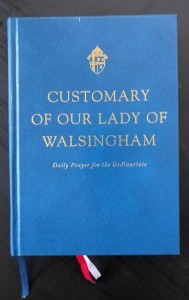 I am a great enthusiast for the Liturgy of the Hours. It holds a key, I believe, to the evangelization of the culture (if you want to know my arguments, I have included them in both books, the Little Oratory and the Way of Beauty).
I am a great enthusiast for the Liturgy of the Hours. It holds a key, I believe, to the evangelization of the culture (if you want to know my arguments, I have included them in both books, the Little Oratory and the Way of Beauty).
Whatever our thoughts on the appropriateness of the vernacular in the Mass, I do think that the availability of the Liturgy of the Hours in the vernacular is one great gift of the Council. I am not a Latin scholar and generally, and certainly in my personal reading in order to pray the psalms properly I need to be able to understand the text as I read it. Reading or singing Latin while looking across the page at a translation on a regular daily basis does not work for me. The Mass is Latin does not present the same difficulty for me – the bulk of it is repeated and so with relatively little reference to additional texts I can participate.
I have often wondered if this question of language is why some traditionalists are not enthusiastic about the Liturgy of the Hours – tending to promote a piety that excludes it. Certainly, some I have met are reluctant to acknowledge any legitimate case for a value for the the vernacular in the liturgy for fear that it would undermine the argument for an exclusively Latin Mass. A piety focused on he Mass and the Rosary is wonderful of course, but one oriented to the Mass and the Liturgy of the Hours is even better I suggest, and for me that means going to the English for the latter.
Ever since Pope Emeritus Benedict created the Anglican Ordinariates, I have felt that it has given the move for greater dignity and beauty in the liturgy in the English a huge boost. I wrote about the general principle of this when Pope Francis strengthened the mission of the Ordinariate in an article called Has Pope Francis Saved Western Culture?
It has taken time, quite reasonably for the approved and final versions for the texts to come forth. Now that the texts have been set for the Mass, I am hoping that we will see a final version of the Office soon in the US very soon. As a preview I use the version produced for England and Wales, which is in the Customary of Our Lady of Walsingham. It has been recently approved for continued use in England and Wales as I understand it.
You can get hold of the Customary from bookdepository.com which promises free delivery worldwide and sells it at a reduced price.
The Customary follows the general scheme recommended for the Ordinariate (you can read this at the bottom of this article. It is very short and simple). In essence, Morning Prayer is like a merging of the Matins (the Office of Readings) and Lauds. I am wondering if this is what the old Anglican Office of ‘Mattins’ always was. The morning readings are correspond exactly to those of the Office of Readings in the Roman Rite (with some approved alternatives for the second reading for English readers). Other than the psalms, there is a traditional hymn, an old testament canticle or the Te Deum (depending on the day), and structured prayers.
Similarly, Evening Prayer, like Choral Evensong, looks a bit like a running together of Vespers and Compline in form. So we have psalms, traditional hymn, readings, both the Magnificat and the Nunc Dimittis and again structured prayers.
I have had it for a week or so now and from what I have seen I am excited. I think that this, the indications are that this provides great possibilities for lay people especially to start praying the Office. The Anglican Office has a proven record not only in enabling laity as well as clergy to pray the Office but also as a public celebration of Morning and Evening Prayer. I heard recently from Mgr Andrew Burnham in England, who was instrumental in producing this, that this continues to this day. As he told me, the ‘English Anglican cathedrals and choral foundations are in the midst of a golden age, as regards both attendance and music, and clearly meet a very deep need’.
Here are my reasons for suggesting that lay people look at the Anglican Ordinariate Office:
First, convenience and simplicity: the psalm cycle is designed such that it is possible to sing the whole Office with just two Offices in the day – the hybrid Morning and Evening Prayer which allow us, one might say, to sing four Offices as two, and to sing the whole psalter in the course of the monthly psalm cycle. This means that it really is the Office for those who do not have many hours in each day to devote to singing the psalms. However, for those who do have more time, perhaps occasionally, and wish to add more Offices in the day from time to time, there are simple options to add Prime (yes Prime!), Terce, Sext, None and Compline.
Second, as I mentioned, it has the full psalter, all 150 psalms, in its cycle. I am not aware of another version approved for use in English that has this. The other option in the vernacular that I know of is the approved translation of the Paul VI psalter. In the Paul VI psalter, even if all the Offices are sung (a minimum of five in a day), you will still not sing the whole psalter as the cursing psalms are omitted altogether (that is three psalms in total), and many of those that are included are incomplete and have missing texts. According to my count 24 psalms that are included in the Paul VI psalter are incomplete and have missing texts. There were no doubt very good reasons for this, bu I am happy that now the Church has decided in her wisdom to allow for a translation of the full psalter to be available for praying in the Liturgy of the Hours. (I wrote about this in more detail in the past, here - Where Have All the *!*?ing Psalms Gone?).
Third, is beauty. I love the approved translation of the psalms that the Anglican Ordinariate uses, which is a form of the Coverdale Psalter. I have to say I am not negative about the Grail translation either, but I do find the Coverdale Psalter especially good. It is has an elegant, poetic Shakespearean feel to it, but is nevertheless accessible. I had have had to look up the meaning of the occasional word I will admit (froward and peradventure for example) but not so often that I lose the flow of text as I sing or read it. (Just fyi, I am the sort of person who finds the actual Shakespeare easy to understand at all. If I attend a performance of even a top quality companies – such as the Royal Shakespeare Company – I always have to buy a program with a one-page synopsis of the plot, otherwise I lose track of what on earth is going on!). I think that if this version of the psalms was sung in the domestic church of Catholic family, the impact it would have on the formation of children growing up and listening to, reading and praying such texts sung on a regular basis would be profound.
There is of course a centuries old tradition of chanting these psalms within the Anglican church and this is now available to us. The text is set out with traditional chant in mind – with couplets. Again, this is one of the great drawbacks of the American version, at least, of the Paul VI psalter. It’s almost as if it was set out deliberately to make any form of singing that might be close to a traditional chant very difficult (the British version is better in this respect).
To indicate how adaptible this text is for singing. When I sing the Office I sing the Coverdale psalter to psalm tones based upon traditional chant that we used in the Office when I was teaching at Thomas More College of Liberal Arts in New Hampsire. I use these because if the pointing is done according to the natural emphasis of speech, regardless of which tone is sung, then the tones are designed to match this pointing pattern and so every psalm tone can be sung to any psalm. As a result you don’t need to have a full repertoire of tones in order to be able to sing the whole Office, but it does mean that as your repertoire of tones increases, you can apply them to any psalm. The setting of this psalter means that with a quick exercise in pointing, with a pencil, you can sing it in your family. Here is a bit of the text which I have pointed…

For more information on these psalm tones, you can follow the link here. It was these tones that we sung also, when we sang an Evening Prayer (with both the Magnificat and the Nunc Dimittis in English) in the VA Hospital for the Veterans in Manchester, NH. This was very well received by patients and nurses alike (some readers may remember me writing about this in the past, here)
I’m keeping my fingers crossed that something similar and easily available will be produced here.
Note, you don’t have to be a member of the Ordinariate to legitimately sing the Office. I mention this because after Leila Lawler and I first suggested, in our book the Little Oratory, that readers think about this as an option at home, some people thought that we were suggesting that people who were already part of the Catholic Church should leave their parishes and become official members of Ordinariate parishes. We were not!
Below is a copy of the CDF approved outline for the layout of Morning and Evening Prayer for the Personal Ordinariates:
Notes:
• Required elements appear in bold, while elements in [squared brackets] are occasional or optional. • The Old and New Testament Lessons are to be taken from the Revised Standard Version of the Bible, Catholic Edition.
• The Collect of the Day should correspond to the relevant Collect in Divine Worship: The Missal. • If the Litany is to be recited at Morning or Evening Prayer, it is to be taken from Divine Worship: The Missal (Appendix 8).
• The Invitatory may be accompanied by seasonal antiphons.
• In place of one of the scriptural Lessons, a non-scriptural reading drawn from the 2nd Reading from the Office of Readings in the Liturgy of the Hours may be included. Other non-scriptural readings may be added, but may not replace on of the scriptural Lessons.
• When a lay person leads a public prayer of the Divine Office, the invitation “The Lord be with you” is omitted or substituted by “O Lord, hear our prayer” and the response “And let our cry come unto thee.”
• Night Prayer (Compline) may be recited apart from Evening Prayer, in which case the Nunc Dimittis is always included.
• This Guideline does not exclude the addition of an optional, supplemental provision for the Lesser Hours (Prime, Terce, Sext, None, Compline).
February 11, 2016
The Devil Hates Latin, Says Exorcist
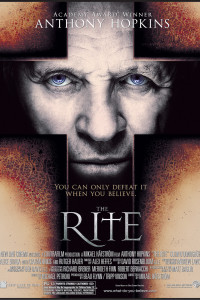 I just attended a talk by the exorcist for diocese of San Jose dioceses Fr Gary Thomas. He is the subject of a book and a film The Rite starring Anthony Hopkins. (The talk was organized by a group called Catholics at Work.)
I just attended a talk by the exorcist for diocese of San Jose dioceses Fr Gary Thomas. He is the subject of a book and a film The Rite starring Anthony Hopkins. (The talk was organized by a group called Catholics at Work.)
First, he was a great speaker. He described how almost by accident and after 20 years as a parish priest he found himself sent to Rome to learn how to celebrate the Rite of Exorcism. He was very clear in saying how, in his opinion, the rise in interest in New Age paganism in recent times has opened the door to adherents to the occult in greater numbers than before, which in turn opens the way to diabolical possession. He has always been inundated with requests (even before the publicity).
The fact that he described these things pretty much in the same straightforward, matter of fact way that one might describe what goes on in a marriage or baptism in a parish RCIA class only served to reinforce the truth of it all for me. And I would say that if anything is to increase your faith, it is listening to accounts of how the Church overcomes the effects of possession by the devil and demons and the suffering of those poor people who are affected by them.
I wanted to pass on one little comment that he made almost in passing. I do not know where he stands liturgically in regard to the Mass – there was nothing in what he said that led me to believe that he celebrates the Latin Mass for example. However, he did explain that the Rite of Exorcism is only said in Latin. One reason is practical – there is no approved translation in English as yet. He gave another reason why he was so strongly in favor of the use of Latin in the Rite of Exorcism: ‘The Devil hates Latin, it is the universal language of the Church’. I asked him about this afterwards and he repeated it saying that his personal experiences as an exorcist who has performed many, many exorcisms have convinced him of this. He told me he had heard from exorcists who did exorcisms in Italian, Spanish and Portuguese (the only approved vernaculars for this Rite) that Latin was the most effective language.
I found an interview with him online, which may interest readers, here.
and here is Fr Gary Thomas,
February 9, 2016
How Modern Psychology Fails to Account for the Fall
And why the success of Alcoholics Anonymous is based on the fact that it does!
In my last blog posting I described the recorded lecture series from Audible.com, which is also a book, called the Willpower Instinct by Kelly McGonigal. I enjoyed it and much of what I heard I found interesting and, as I described in the last posting, very helpful in many ways.
Whatever her personal beliefs on spiritual matters are, she approaches this subject in these lectures as a pure scientist who observes what influences human behavior in order to help people have greater self-control. I have no reason to doubt the accuracy of her observations of general human behavior or her methods for controlling personal behavior based upon those observations. As I mentioned last time, much was consistent with traditional methods for controlling behavior. There were some insights that were new to me and when I tried them out myself they were very helpful in my self control.
However it was when she started to describe why we had these difficulties in the first place that I found myself less convinced.
If you remember, her assessment of the sort of problems in self control arose from an inner conflict. Part of us knows what is good for us in the long term but some people have a problem because they don’t have sufficient self control to live in accordance with what we know is good in the long term. This is because we are drawn to what will give us pleasure in the short term. So even thought the dieter knows he should eat healthily, he still can’t resist the cream cake when it is put in front of him.
All pretty reasonable so far.
But then she starts to give her reasons as to why she thinks that this conflict exists. She accounts for it in terms of evolution. She begins by assuming that in prehistoric man, all instincts would be in perfect harmony with each other, and with external circumstances. Because man had evolved to deal with his natural environment, she assumes, our emotions and instincts would work well for the sort of situation that prehistoric, precivilization man would have to deal with. When food is in short supply for example, it is important to eat as much as you can when it is available, she says. That instinct remains with us even though the situation has changed. Nowadays we have a surfeit of food and these instincts don’t help us. So we continue to act as prehistoric man would and our instincts keep telling us that we should just keep eating even when part of us knows that this isn’t serving our long term goals.
The question one might ask at this point is, why didn’t man evolve with his environment? Surely the more successful people, and those most likely to reproduce and dominate the general profile of the psychology of the species are those who stay healthy. So those who by naturally have instincts that do not cause them to over-indulge when there is an abundance of available food will dominate and the overall nature of the human race will change.
My guess is that her answer to this would be that something like this would happen in time, but the environmental change has to lead the evolutionary effect that it causes; and there hasn’t been time yet for this change in human nature to occur. There is some evidence to support this – from what I recall those races who have had much longer exposure to alcohol historically (eg Jews and Italians) have a much lower rate of alcoholism than those who have a relatively recent exposure, (eg Celtic races such as the Irish, and especially Eskimos and Native Americans).
While I can accept that there might be some general pattern of improvement over time and that it is conceivable that evolution might have a part to play in chat change, I do not believe that this time lag in effect is the sole cause of our problems. Let’s apply this to the case of the alcoholism. Clearly, before alcohol was invented there could be no alcoholics. This wasn’t a problem for prehistoric man, or at least pre-alcohol, prehistoric man. Once alcohol came into society, the propensity for addiction to alcohol would be different for different people and natural selection would gradually weed out of the population that strain of those who have a greater propensity for alcoholism over time. This explains the observation referred to above, that Jews and Italians have a low alcoholism rate.
However, that doesn’t mean, I suggest, that life was mental-problem free for prehistoric man. He was as much subject to Fall as we are. There will have been temptations to immediate gratification of the emotions then as there are now and evolution would never remove those. Regardless of how their environment brought them to the surface, these conflicts would have been as real for them in their interpersonal relationships as they are for us today.
As a Christian would propose the following hypothesis: man has a fallen nature. He will always be in a conflict between what his passions bid him do – the short term goals as described by Ms McGonigal – and between what he knows to good based upon reason. So while the actual temptations might change depending on where and when we live, there will always be something that is going to cause us problems. That’s part of human life. Some people will always be greedy and the part of this that derives from as self-centered nature cannot be removed from man altogether by natural means.
In the Christian understanding of man, he is body, soul and spirit. The spirit is that part of our soul that is most likely to be aware of what is good for us in the long term (see more on this anthropology in a past article, here). By long term, I mean the longest term possible, eternity. The spirit is that part which desires our heavenly destiny. In the properly ordered man, spirit, soul and body are all in harmony. In man since the Fall, dubbed by St John Paul II ‘Historical’ man, these are in conflict. Hence St Paul says that the ‘spirit is willing, but the flesh is weak’. Only in heaven will we have perfect ordering of spirit, soul and body. But by degrees we can move towards greater self control in this life.
Both hypotheses – that of modern psychology which says that short term and long term instincts were in harmony for prehistoric man; and the Christian one that says he was as subject to temptation and the effects of the Fall – are scientifically unproven and perhaps unproveable. Prehistoric man comes from a time when, by definition ,there were no historical records, so we just don’t know enough about his psychology to be certain about what he was like.
The assumption that primitive man was perfect gained great popularity with the 18th century French writer, Rousseau and his concept of the ‘noble savage’. For Rousseau civilization corrupted man, it did not perfect him. Modern psychology, if these lectures are anything to go by, seems to have adopted a faith in the very unscientific and ininspired speculation of Rousseau.
For the Christian, the ultimate answer to our inner conflict is the same then as it was now, and that is grace – God’s help. While this does not invalidate scientific, psychological methods of self control, it does offer an additional and I would say potentially even more powerful source of help for our problems relating to the conflict between the doing what we know we ought. It might even give an explanation as to why the the psychological solution works – it helps us to cooperate with grace.
In support of this I would point to Alcoholics Anonymous and the other 12-Step fellowships that deal with addiction. My understanding is that these are still the most successful means to overcome addiction. They are unapologetically spiritual in their approach. Generally the AA solution does make us of routines and exercises that are very similar to those suggested in the Willpower Instinct, but it adds also a spiritual dimension, such as prayer to a loving Higher Power, God.
No doubt some psychologists will look at AA and try to explain its success in purely psychological terms without consideration of the spiritual. But at root of all these explanations will be an assumption, an unproven hypothesis, that God does not exist and that there must be another explanation. So even where such a psychologist acknowledges the powerful effect of prayer or mediation for example, it will tend to discount the possibility that the reason that it is helpful is because there is truth to the beliefs that underlie them. So they might, for example, acknowledge those those who pray to and worship God have happier lives, but will tend to explain it in terms of a useful psychological trick of self delusion.
Scientific progress in all fields is one of the great blessings of the modern world. However, scientists and non-scientists alike should be aware of the limitations of what science is capable of describing. The underlying assumptions of the scientific method mean that it is absolutely incapable of having anything to say, for or against, about the spiritual realm. When you hear a scientist talk about the spiritual you should be aware of this fact. That person is not speaking as a scientist, but as a non-believing individual who has no more authority in this area than anyone else. The genuine scientist, speaking purely as a scientist, will acknowledge that science cannot test the truth of a hypotheses that relies on the existence of God and a spiritual realm for its validity; while allowing for the possibility, at least of its truth.
————–
As an afternote: there is, in the Christian worldview a past in which man was perfect and that was man before the Fall. If man today, in the nomenclature of John Paul II is called Historical Man then the perfect man is not ‘prehistoric’ but pre-Historical. Pre-Historical man was called ‘Original Man’ by John Paul II. The Judeo-Christian tradition has proper names for Original Man – Adam and Eve. Furthermore, we do not need to wait for evolution to take it’s course, which it might, for the perfection of man. By degrees we are transformed supernaturally in this life through our participation in the sacramental life of the Church. We reach our ultimate destiny in union with God in heaven.
So we should ask yourself if the perfect man looks like this:
…or this? To paraphrase St Paul: ‘We preach the crucified Christ, who is a stumbling block to Jews and folly to modern psychologists…’
David Clayton's Blog
- David Clayton's profile
- 4 followers


